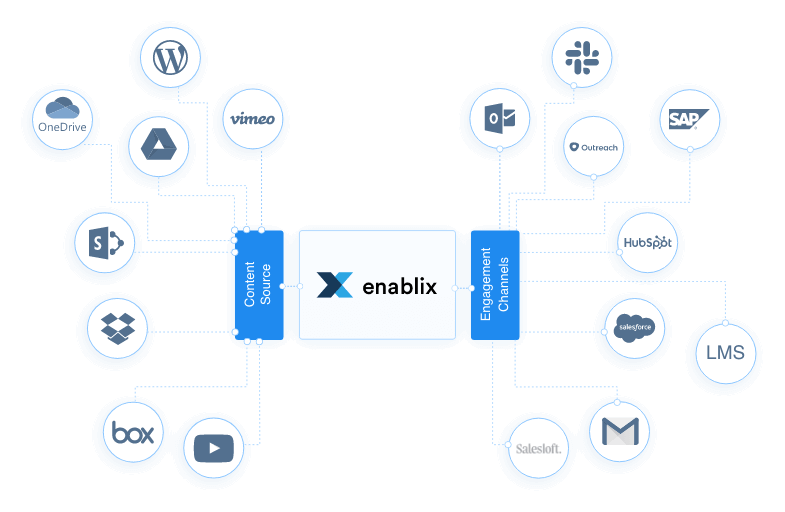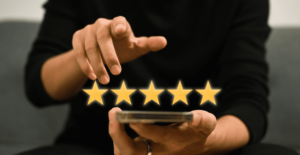In this edition: A sales rep utilizes Enablix’s CRM integrations to share better content and educate the buyer.
Hey everyone, it’s Travis from Enablix. This week, instead of focusing on how I use the Enablix platform itself to educate prospects, I want to talk about the sales ecosystem I use, and how Enablix fits in. More specifically, I’ll walk through how I use integrations with our CRM systems (Hubspot and Salesforce) to better understand how my prospects engage with content and other material to share with them.
Understanding My Prospects
When thinking of the information I want to have in the sales cycle, It’s not enough for me to only know that someone opens an email – I have to know more. From the content that I’m sending out to how they’re responding to it, I want to understand why a given customer might find something interesting.
This info will really give me a direction of where to go from there. At Enablix, we use Hubspot as our Marketing CRM, so I can log in to see the kinds of activity a prospect has. In this instance, let’s use Nick Ziech-Lopez as our example. Nick is the CMO over here at Enablix, and he interacts with tons of content. In the Hubspot prospect view, we can not only see how he’s interacted with marketing material, but enhanced information on how he’s interacted with material that’s been shared through Enablix.
As I scroll through his profile, I can see that he’s viewed pricing, our “About Enablix” page, customer stories – he’s viewed a TON of content here. But in the typical use case, a prospect will have more specific content that they’re interested with.
So I know the Enablix information he’s viewed and the marketing material he’s seen, but where do I go from here?
Intelligent Content Recommendations
To answer that question, I turn to our sales CRM integrations. At Enablix, we use Salesforce as our sales system of record, so I’m going to use that app to send Nick a follow-up message based on his activity in Hubspot.
If we move over to Salesforce, I’ve already set up Enablix as an opportunity for this example (I love demo data). My next action is that I need to know what content I should send to my contact there, Nick. As we saw in Hubspot, Nick engaged with tons of content – and I have two options for sharing content with Nick:
- Use Enablix’s ML-based content recommendation engine to show me what the account needs to be educated
- Search for other information within the system based on the things I learned from our CMS
You can see on the opportunity page that Enablix is recommending I share a few items with Nick – in this example it’s a mobile security whitepaper because of how we classified the opportunity in Salesforce.
Honestly, even given what we just saw in Hubspot, this content is going to satisfy my use case like 90% of the time. The recommendations are based on all the attributes of the person and deal, and it typically finds the right kind of content that I’m looking to share.
But let’s say that we new of an existing piece of content that we wanted to send using the information we just saw in Hubspot. I can search within Salesforce to find my content – similar to how I would in the Enablix app, but without needing to log into another system.
Wrapping Up
Ok so this blog was filled with demo data because I can’t really show you actual prospect and customer information (sorry Nick!).
But the takeaways here are real – if you’re using content in sales, don’t settle for a tool that makes you go to the product for answers, find something that integrates with where you are. Thanks for reading.




